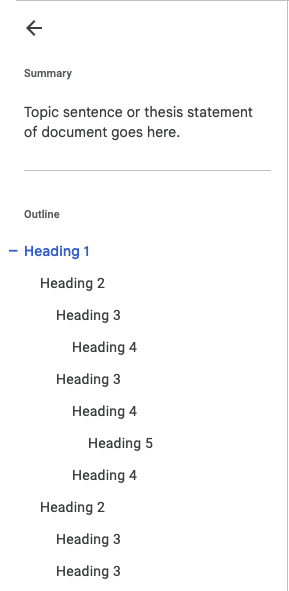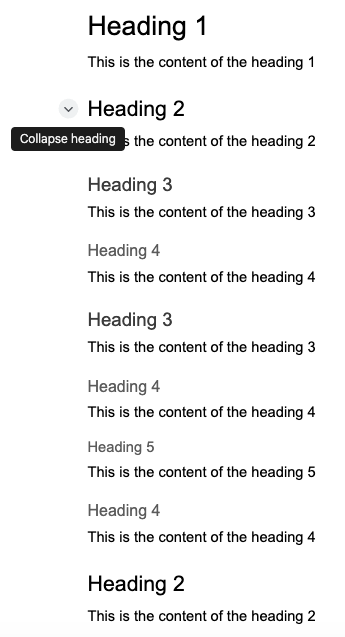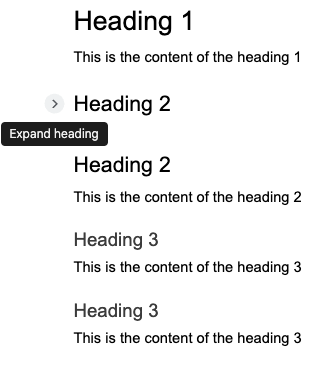This page is intended for any Lower Columbia College faculty or staff that intend to post documents online, whether on our Public website or Internal website, any other institutional websites, Canvas, ctcLink, etc. If you have not already, please familiarize yourself with the General Content Accessibility Guidelines, which are prerequisite to the guidelines below.
Creating accessible documents can be daunting, especially if the document has a lot of visual information like charts/graphs, images, or maps. As with creating other types of accessible content, perfection is not the goal, but inclusion is. It is important to start know where to start to avoid making unnecessary work for yourself. Be sure to consider the final format you want your document to be posted in to limit conversions from one document type to another, as conversion can result in loss of information. That is, create and edit your document in the same format you want it posted in as often as possible, and if you can't, start as close to the final format as possible.
Policy/Procedure Requirements
Please see Lower Columbia College Policy 720 (Procedure 720.1A) for the required administrative procedure for posting documents and forms to the LCC website.
Google Docs
Google Docs is a great place to start for any document. The great thing about this format is how shareable it is. Our institution is set up to use Google Workspace, so we end up starting there often. While this platform doesn't support more advanced accessibility features, it can be easily converted to a Word Document if your document becomes complex enough to need those features, or if you want to check your document for accessibility issues.
The Google Help Center provides resources for creating accessible documents, presentations, and sheets.
The reason I love starting my documents in Google Docs is because it makes it easy and intuitive to use an accessible heading structure. Headings can and should of course be used in other document editors, but in Google Docs, you can see the hierarchy in the sidebar visually to get a quick and simple overview of your document's structure. You can also collapse the content of one or multiple headings which is very helpful in seeing where paragraphs and subheadings are nested. See the images below for examples.
Google Docs sidebar: Summary and Outline

Google Docs heading example (no headings collapsed)

Google Docs heading example (Heading 2 collapsed)

Converting a Google Doc to a Microsoft Word Document
If your document becomes complex, it may be necessary to convert it to a Microsoft Word document so you can take advantage of Microsoft Word's more extensive accessibility features. This is recommended if your document contains complex tables or complex images. Converting to a Word document is also a great way to check for accessibility issues, because you can run the Accessibility Checker from within Mircosoft Word. Note if your downloaded document passes the accessibility check, your Google Doc is considered compliant This check will need to be repeated after any changes are made to the source document.
To convert a Google Doc to a Word document, follow these simple steps:
- Open the document in Google Docs.
- Open to the file menu by clicking "File" in the top left of the screen under the document title.
- In the file menu, find the "Download" menu item and hover your mouse over it to open the submenu.
- Choose the option "Microsoft Word Document (.docx)".
- Depending on your computer and browser settings, this may download automatically to your Downloads or another custom folder, or it may prompt you to choose a place to download the file. You can now open this file in Microsoft Word on your computer.
Converting a Google Doc to a PDF
To convert a Google Doc to a PDF document, follow these simple steps:
- Open the document in Google Docs.
- Open to the file menu by clicking "File" in the top left of the screen under the document title.
- In the file menu, find the "Download" menu item and hover your mouse over it to open the submenu.
- Choose the option "PDF Document (.pdf)".
- Depending on your computer and browser settings, this may download automatically to your Downloads or another custom folder, or it may prompt you to choose a place to download the file. You can now open this file in Microsoft Word on your computer.
Microsoft Office 365
The Microsoft Help Center provides excellent resources for creating accessible documents within the Microsoft Office 365 ecosystem, including: Word, Powerpoint, Excel, and Outlook. Each of these editors have a built-in Accessibility Checker that will flag accessibility issues.
Microsoft Word Documents
The Microsoft Help Center provides excellent resources for creating accessible documents in Word.
- The State Board for Community and Technical Colleges (SBCTC) provides a useful Canvas module on creating accessible Word documents.
Converting a Word Document to a Google Doc
In general, we prefer to start with a Google Doc and convert it to a Microsoft Word document if needed, because converting the other way (from Microsoft Word to Google Docs) can result in loss of some accessibility features. That said, here are the known issues in converting Word documents to Google Docs, and known workarounds for them if this type of conversion is necessary in your case.
- Microsoft Word documents opened in Google Docs will lose the title field of all image alt text, but the description field of image alt text will be maintained in the conversion. We therefore recommend that you copy the title field of all image alt text on your Word document into the beginning of the description field on that same image before you convert the document to a Google Doc.
- After conversion, table headings will be lost. The color of the table cells will still look like headings, but they will not function as semantic headings for screen readers. There is no known way to work around this issue. For this reason, we suggest that documents with complex tables not be converted from Microsoft Word documents to Google Docs.
Converting a Word Document to a PDF
If your source document is a Microsoft Word document, follow the instructions provided by Microsoft Help Center in this excellent resource for creating accessible PDFs from a Word Document.
Microsoft Powerpoint Presentations
The Microsoft Help Center provides excellent resources for creating accessible presentations in Powerpoint.
The State Board for Community and Technical Colleges (SBCTC) provides another useful Canvas module on creating accessible Powerpoint presentations.
Microsoft Outlook Emails
The Microsoft Help Center provides excellent resources for creating accessible emails in Outlook.
The State Board for Community and Technical Colleges (SBCTC) provides another useful Canvas module on creating accessible Emails. Note that this module covers best practices not specifically related to Microsoft Outlook.
PDF Documents
If you have the source document
Both Google Docs and Microsoft Word have the option to export a document as a PDF. If you have access to the original document, you can check it for accessibility (and add the footer required by Policy 720, Procedure 720.1A) before exporting.
If you do not have the source document
If you don't have access to the source document for a PDF, you can use Adobe Acrobat Pro to check the accessibility of the document. If you do not have access to Adobe Acrobat Pro yet, please open an IT ticket to get your license activated before you begin. In the case that the document does not pass Adobe's Accessibility Checker, you can fix the PDF in Adobe Acrobat (and add the footer required by Policy 720, Procedure 720.1A). A detailed example of PDF remediation in Adobe Acrobat Pro can be found below:
The State Board for Community and Technical Colleges (SBCTC) provides a useful Canvas module on creating accessible PDF documents. Please note that this tutorial relies on Adobe Acrobat Pro.